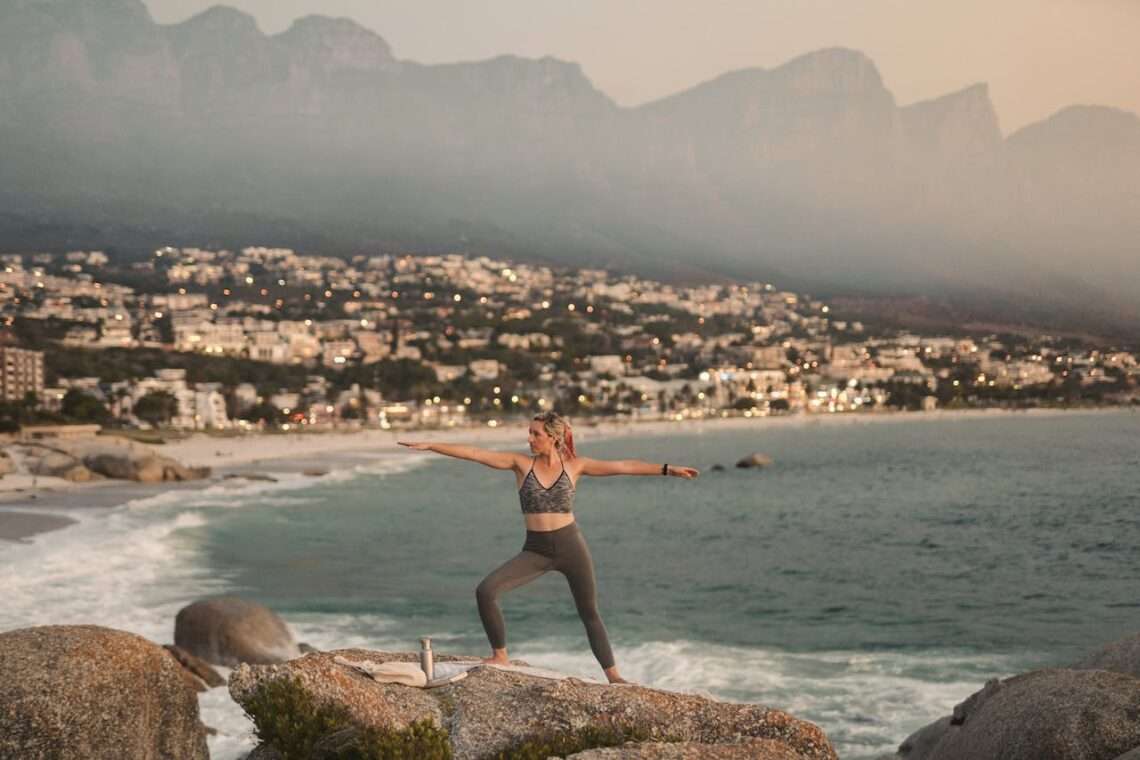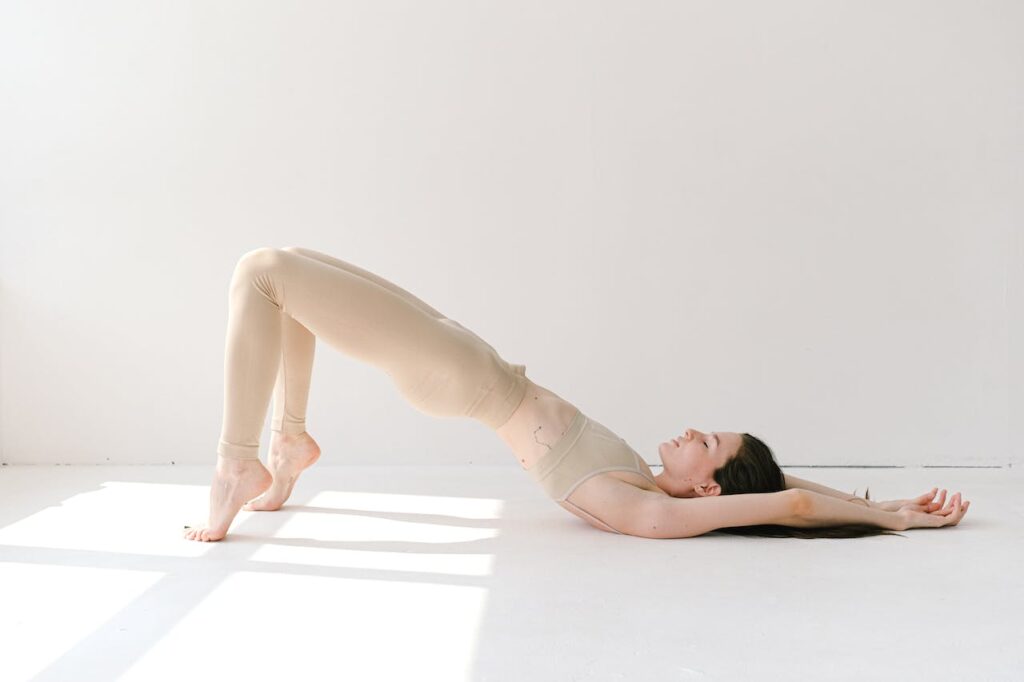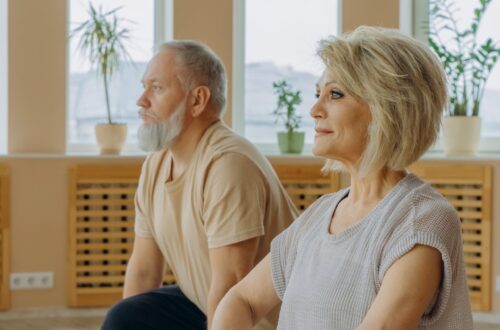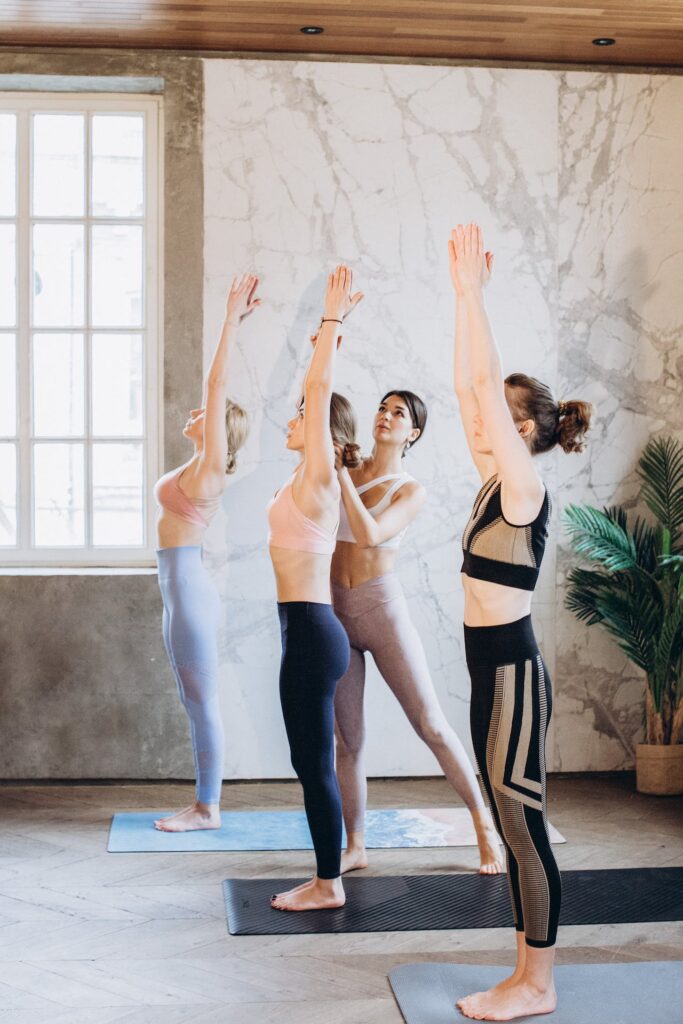
Namaste Newbies: Beginner-Friendly Yoga Poses to Try Now
Namaste! Yoga, an ancient practice that harmonizes the mind, body, and spirit, has become a global phenomenon. Yoga is a wonderful practice that offers numerous physical and mental benefits. Yoga is like opening a door to a world of holistic well-being, where the mind, body, and spirit converge in harmony.
For those taking their first steps into this ancient practice, starting with beginner-friendly yoga poses is the key to building a strong foundation. In this blog, we’ll explore a handful of poses that are not only accessible for beginners but also unveil the layers of physical benefits, mental calm, and the spiritual connection they offer.
Introduction to Yoga for Beginners:
Yoga is a holistic practice that originated in ancient India and has evolved over thousands of years. It is a combination of physical postures, breath control, meditation, and ethical principles aimed at promoting overall well-being. For beginners, embracing yoga can be a transformative journey that not only improves physical fitness but also enhances mental and emotional balance.
Key Components of Yoga:
Asanas (Physical Postures): Yoga involves a series of physical postures or asanas designed to promote strength, flexibility, and balance. These poses can range from simple and gentle to more complex, allowing practitioners to gradually progress based on their abilities.
Pranayama (Breath Control): Breath is a crucial aspect of yoga. Pranayama involves various breathing techniques that help regulate and deepen the breath. Learning to control the breath can have a profound impact on both physical and mental well-being.
Meditation and Mindfulness: Yoga encourages mindfulness and meditation to cultivate a calm and focused mind. Through meditation, practitioners can develop greater self-awareness, reduce stress, and improve mental clarity.
Yamas and Niyamas (Ethical Principles): These are moral and ethical guidelines that form the foundation of yoga philosophy. They include principles such as truthfulness, non-violence, contentment, and self-discipline, providing a framework for living a balanced and purposeful life.
Benefits of Yoga for Novices:
Improved Flexibility: Regular practice of yoga helps increase flexibility by gradually stretching and lengthening muscles. This can contribute to better posture and a reduced risk of injuries.
Increased Strength: Many yoga poses require the use of body weight for resistance, helping to build strength in various muscle groups. This can lead to improved overall fitness and functional strength.
Stress Reduction: The combination of physical movement, breath control, and mindfulness in yoga can significantly reduce stress levels. Yoga encourages relaxation, helping to alleviate tension in both the body and mind.
Enhanced Mental Focus: Practicing meditation and mindfulness in yoga cultivates mental clarity and focus. This can be beneficial for concentration, decision-making, and overall cognitive function.
Better Posture: Yoga emphasizes awareness of body alignment, leading to improved posture. This can be especially beneficial for those who spend long hours sitting at a desk or engaging in activities that may contribute to poor posture.
Mind-Body Connection: Yoga encourages a deeper connection between the mind and body, fostering a sense of unity and balance. This holistic approach can contribute to a more harmonious and integrated sense of self.
Increased Energy Levels: Regular yoga practice can boost energy levels and alleviate feelings of fatigue. The combination of physical movement, breathwork, and meditation helps promote a sense of vitality and well-being.
As a beginner, it’s essential to start gradually, listen to your body, and seek guidance from experienced instructors. Whether you’re looking to improve physical fitness, manage stress, or enhance overall well-being, yoga provides a versatile and accessible path for individuals of all ages and fitness levels.
Creating The Perfect Atmosphere For Your Yoga Practice:
Creating the perfect atmosphere for your yoga practice involves setting up a space that promotes relaxation, focus, and mindfulness. Here are some tips to help you create an ideal environment for your yoga sessions:
- Choose a Quiet Space:
- Select a quiet area where you won’t be easily disturbed. This could be a room, a corner of a room, or any space where you can find some solitude.
- Declutter the Space:
- Clear the area of unnecessary clutter to create a sense of openness and calm. A clean and organized space contributes to a peaceful atmosphere.
- Natural Light and Ventilation:
- Whenever possible, practice yoga in a space with natural light and good ventilation. Fresh air and natural sunlight can enhance your energy levels and mood.
- Set the Right Temperature:
- Ensure the room is at a comfortable temperature. If it’s too cold, consider using a blanket; if it’s too warm, have a fan or air conditioning available.
- Use Soft Lighting:
- Opt for soft, ambient lighting. Consider using candles, fairy lights, or dimmable lamps to create a soothing atmosphere. Harsh lighting can be distracting and may hinder relaxation.
- Soothing Colors:
- Choose calming and neutral colors for the walls and furnishings. Soft blues, greens, or earth tones can contribute to a tranquil environment.
- Aromatherapy:
- Use essential oils or incense to add pleasant scents to the room. Scents like lavender, eucalyptus, or chamomile can promote relaxation and focus.
- Quiet Background Music or Nature Sounds:
- Play soft, instrumental music or nature sounds to create a calming background ambiance. Ensure the volume is low enough not to distract from your practice.
- Create a Personal Altar or Focal Point:
- Designate a small area for a personal altar with meaningful objects, such as candles, crystals, or inspiring images. This can serve as a focal point for your practice.
- Comfortable Flooring:
- Use a comfortable and non-slip surface, such as a yoga mat or a rug, to practice on. This provides a supportive foundation for your poses.
- Comfortable Seating:
- If your practice involves meditation or seated postures, have a comfortable cushion or meditation seat to sit on.
- Disconnect from Electronics:
- Turn off electronic devices or put them on silent mode to minimize distractions. This time is dedicated to self-care and mindfulness.
- Create a Ritual:
- Develop a pre-practice ritual, such as lighting a candle, taking a few deep breaths, or setting an intention. This helps signal to your mind that it’s time for focused, mindful practice.
- Personal Touches:
- Add personal touches to the space, such as artwork, plants, or objects that bring you joy. These elements contribute to a sense of connection and comfort.
The most important aspect of your yoga practice is your personal comfort and connection with your space. Adjust these suggestions based on your preferences and needs.
Essential Yoga Equipment for Beginners:
For beginners in yoga, having the right equipment can enhance comfort, provide support, and make the practice more enjoyable. Here’s a list of essential yoga equipment for beginners:
- Yoga Mat:
- A high-quality, non-slip yoga mat is essential for providing a comfortable and stable surface for your practice. It provides cushioning for your joints and prevents slipping during poses.
- Yoga Blocks:
- Blocks are great for providing support and stability, especially for beginners who may need assistance in certain poses. They help in maintaining proper alignment and make poses more accessible.
- Yoga Strap:
- A yoga strap is useful for stretching and improving flexibility. It can help you reach positions that may be challenging for beginners. Straps are particularly handy in seated stretches and poses that involve reaching your feet.
- Yoga Blanket:
- A yoga blanket can be used for added comfort and support during seated poses, relaxation poses, or as a prop to modify certain asanas. It can also provide warmth during the final relaxation (savasana).
- Yoga Bolster:
- A bolster is a cylindrical cushion that provides support during restorative poses and can be used to enhance comfort in various positions. It’s especially helpful for maintaining relaxation in poses held for longer periods.
- Comfortable Clothing:
- Wear breathable, stretchy clothing that allows for a full range of motion. Comfortable attire contributes to a more enjoyable and unrestricted practice.
- Water Bottle:
- Staying hydrated is important during any physical activity. Keep a water bottle nearby to sip water as needed throughout your practice.
- Meditation Cushion:
- If you plan to incorporate meditation into your yoga practice, a meditation cushion or bolster can provide support for a comfortable seated position.
- Grip Socks:
- Grip socks with rubberized soles can help prevent slipping, especially if you’re practicing on a smooth surface. They provide additional traction during poses.
- Appropriate Props for Your Practice:
- Depending on your specific needs and the style of yoga you’re practicing, additional props such as a yoga wheel, stability ball, or sandbags may be beneficial.
As you progress in your practice, your needs may change, and you may choose to explore additional props or equipment. It’s always a good idea to consult with your yoga instructor for personalized recommendations based on your practice and goals.
Beginner-Friendly Yoga Poses:
Beginner-friendly yoga poses are simple and accessible postures designed for those new to yoga practice. These poses focus on building strength, flexibility, and balance, making them ideal for individuals starting their journey towards a healthier and more mindful lifestyle.
Here are step-by-step instructions for 1O beginner-friendly yoga poses:
Benefits:
- Improves posture and balance
- Strengthens thighs, knees, and ankles
- Increases awareness and concentration
Instructions:
- Begin by standing at the top of your mat with your feet together or hip-width apart, depending on your comfort.
- Distribute your weight evenly on both feet. Engage your thighs and lift your kneecaps, drawing your tailbone down slightly.
- Lengthen your spine, reaching your arms alongside your body with palms facing forward. Roll your shoulders back and down.
- Keep your chest open and your chin parallel to the ground. Gaze straight ahead or close your eyes if comfortable.
- Ground down through your feet, imagining roots extending into the earth.
- Breathe deeply and hold the pose for 30 seconds to 1 minute, maintaining a steady and even breath.
Tip: Imagine yourself as a mountain, rooted and stable, while maintaining a gentle lift through the crown of your head.
2. Downward-Facing Dog (Adho Mukha Svanasana):
Benefits:
- Stretches the shoulders, hamstrings, calves, and arches of the feet
- Strengthens the arms, legs, and core
- Improves circulation and energizes the body
Instructions:
- Start on your hands and knees in a tabletop position, with your wrists directly under your shoulders and knees under your hips.
- Inhale as you tuck your toes and lift your hips toward the ceiling, straightening your legs. Your body should form an inverted V shape.
- Keep your hands shoulder-width apart, fingers spread, and press firmly into the mat. Your feet can be hip-width apart.
- Lengthen your spine, drawing your chest toward your thighs. Keep your head between your arms, with your gaze toward your feet or slightly back between your legs.
- Engage your quadriceps to lift your thighs, and press your heels toward the floor. If your heels don’t touch the mat, that’s okay—focus on the stretch in your hamstrings.
- Hold the pose for 30 seconds to 1 minute, breathing deeply. Relax your neck and shoulders.
- To release, bend your knees and lower them back to the mat, coming into a tabletop position.
Tip: Downward Dog is a resting pose, so if you feel fatigued, you can always return to it during your practice.
Both Mountain Pose and Downward-Facing Dog are commonly used in yoga sequences and can be foundational for various poses. Remember to breathe deeply and listen to your body. If you have any health concerns or injuries, consider consulting with a yoga instructor or healthcare professional before attempting new poses.
3. Tree Pose (Vrikshasana):
Benefits:
- Improves balance and concentration
- Strengthens legs and core muscles
- Stretches the thighs, groins, and shoulders
Instructions:
- Start by standing tall in Mountain Pose (Tadasana) with your arms by your sides and weight evenly distributed on both feet.
- Shift your weight onto your left foot and lift your right foot off the floor.
- Place the sole of your right foot on the inner left thigh or calf. Avoid the knee joint.
- Find a focal point to gaze at to help with balance. You can use a point on the floor or something eye-level in front of you.
- Bring your palms together in front of your chest in a prayer position or raise your arms overhead, keeping your shoulders relaxed.
- Engage your core muscles to maintain stability. Keep your standing leg strong and straight.
- Hold the pose for 20-30 seconds, breathing deeply.
- Slowly release the right leg and return to Mountain Pose.
- Repeat on the other side.
Tip: Imagine your standing foot as the roots of a tree, grounding you, while your lifted leg is the branches reaching toward the sky.
4. Child’s Pose (Balasana):
Benefits:
- Relieves back and neck pain
- Stretches the hips, thighs, and ankles
- Calms the mind and relieves stress
Instructions:
- Start on your hands and knees in a tabletop position. Your wrists should be directly under your shoulders, and your knees under your hips.
- Inhale, then exhale as you sit back on your heels, extending your arms forward on the mat.
- Lower your chest toward the floor, bringing your forehead to the mat.
- Allow your arms to relax by your sides with your palms facing up.
- Keep your hips over your heels and extend through your fingertips to feel a stretch in your back.
- Breathe deeply and hold the pose for 30 seconds to 1 minute.
- To release, walk your hands back toward your body, returning to the tabletop position.
Tip: Child’s Pose is a resting position that you can return to anytime during your practice to relax and reground yourself.
Remember to listen to your body and modify these poses as needed. If you have any health concerns or injuries, it’s advisable to consult with a yoga instructor or healthcare professional before starting a new exercise routine.
5. Warrior I (Virabhadrasana I):
Benefits:
- Strengthens the legs, arms, and core
- Stretches the chest, lungs, and shoulders
- Improves balance and concentration
Instructions:
- Begin in Mountain Pose (Tadasana) at the top of your mat, with your feet hip-width apart and arms by your sides.
- Step your right foot back, keeping the heel on the ground, and turn the toes outward at a 45-degree angle.
- Bend your left knee, ensuring it is directly over your left ankle, creating a 90-degree angle. Your left thigh should be parallel to the ground.
- Square your hips and shoulders to face forward, bringing your torso upright.
- Inhale as you raise your arms overhead, palms facing each other or bringing the palms together in a prayer position.
- Keep your gaze forward or slightly upward, and relax your shoulders away from your ears.
- Hold the pose for 20-30 seconds, breathing deeply.
- To release, exhale as you bring your hands back down to the mat and step your right foot forward to meet the left. Repeat on the other side.
Tip: Ground down through the outer edge of your back foot while lifting through the arch, and engage your core to maintain stability.
6. Warrior II (Virabhadrasana II):
Benefits:
- Strengthens the legs and opens the hips
- Develops stamina and focus
- Stretches the chest, shoulders, and groin
Instructions:
- Begin in Mountain Pose (Tadasana) at the top of your mat.
- Step your left foot back, keeping the heel on the ground, and turn the toes outward at a 90-degree angle.
- Bend your right knee, ensuring it is directly over your right ankle, creating a 90-degree angle. Your right thigh should be parallel to the ground.
- Extend your arms parallel to the floor, with palms facing down, reaching actively through your fingertips.
- Keep your shoulders directly over your hips and gaze over your right fingertips.
- Ensure that your hips and shoulders are open to the side, facing the long edge of your mat.
- Hold the pose for 20-30 seconds, breathing deeply.
- To release, exhale as you bring your hands back down to the mat and step your left foot forward to meet the right. Repeat on the other side.
Tip: Engage your core, relax your shoulders, and find strength in the stability of your lower body.
Engage your core and modify the poses as needed to suit your comfort and ability level. If you’re new to these poses, take it slow and focus on proper alignment.
7. Cat-Cow Stretch (Marjaryasana-Bitilasana):
Benefits:
- Improves spinal flexibility
- Strengthens and stretches the back, neck, and torso
- Enhances coordination between breath and movement
Instructions:
- Start on your hands and knees in a tabletop position, with your wrists directly under your shoulders and your knees under your hips.
- Inhale as you arch your back, dropping your belly toward the mat, lifting your tailbone, and lifting your head and chest. This is the Cow Pose.
- Exhale as you round your spine toward the ceiling, tucking your chin to your chest, and drawing your belly button toward your spine. This is the Cat Pose.
- Continue to flow between Cat and Cow, moving with your breath. Inhale for Cow, and exhale for Cat.
- Repeat this flowing movement for 1-2 minutes, focusing on the smooth transition between the two poses.
Tip: Focus on the fluidity of the movement, and let your breath guide the transitions between the two poses.
8. Cobra Pose (Bhujangasana):
Benefits:
- Strengthens the back muscles
- Opens the chest and improves lung capacity
- Stimulates abdominal organs
Instructions:
- Start by lying on your stomach with your legs extended and the tops of your feet resting on the mat.
- Place your hands under your shoulders, with your fingers pointing forward and elbows close to your body.
- Inhale as you press through your hands, lifting your chest and upper torso off the mat. Keep your pelvis and legs grounded.
- Roll your shoulders back and down, elongating your neck, and look straight ahead or slightly upward.
- Keep a gentle bend in your elbows, avoiding locking them.
- Engage your core muscles to support your lower back.
- Hold the pose for 15-30 seconds, breathing deeply.
- Exhale as you slowly lower your chest back down to the mat.
Repeat the Cobra Pose for 2-3 rounds, gradually increasing the duration of the hold.
Tip: Focus on lengthening your spine and opening your chest rather than relying solely on the strength of your lower back. If you experience discomfort in your lower back, ease into the pose and avoid pushing too high.
These poses are gentle and accessible, making them suitable for beginners.
9. Bridge Pose (Setu Bandhasana):
Benefits:
- Strengthens the legs, glutes, and core
- Stretches the chest, neck, and spine
- Stimulates abdominal organs and lungs
Instructions:
- Start lying on your back with your knees bent and feet hip-width apart. Your feet should be flat on the mat, and your arms should be by your sides with palms facing down.
- Inhale as you press through your feet, engaging your glutes and lifting your hips toward the ceiling.
- Roll your shoulders back and clasp your hands under your back, straightening your arms. Alternatively, you can keep your arms flat on the mat with palms facing down.
- Keep your thighs parallel to each other and your knees directly over your heels.
- Lift your chest toward your chin, but avoid straining your neck. Keep a natural curve in your neck.
- Hold the pose for 20-30 seconds, breathing deeply.
- Exhale as you release your hands and slowly lower your spine back to the mat.
Tip: Engage your glutes and thighs to lift your hips higher, and avoid over-squeezing your buttocks.
Bridge Pose offers strength and flexibility benefits. Incorporate these poses into your routine to balance effort and ease in your practice.
10. Savasana (Corpse Pose):
Benefits:
- Promotes relaxation and reduces stress
- Calms the nervous system
- Improves focus and concentration
Instructions:
- Lie on your back with your legs extended and arms by your sides. Allow your feet to fall open naturally, with toes pointing outward.
- Close your eyes and let your palms face up, creating a sense of openness.
- Take a few deep breaths, allowing your body to relax into the mat with each exhale.
- Scan your body for any tension and consciously release it, starting from your toes and working your way up to the top of your head.
- Allow your breath to return to its natural rhythm, focusing on the sensation of each inhale and exhale.
- Stay in Savasana for 5-10 minutes, or longer if desired, maintaining a state of complete relaxation.
Tip: Savasana is a time for complete surrender and relaxation. Use props like a blanket or eye pillow to enhance your comfort.
Savasana is often practiced at the end of a yoga session to allow the body to integrate the benefits of the practice and promote a sense of deep relaxation. It’s essential to let go of any active effort and surrender to the pose.
As with any yoga practice, listen to your body, and if you have any health concerns or injuries, consult with a yoga instructor or healthcare professional before attempting new poses.
Pro tips for a successful beginner yoga session:
Here are some pro tips to ensure a successful and enjoyable beginner yoga session:
- Start Slow:
- Begin with gentle, beginner-friendly poses and gradually progress to more advanced ones as you gain confidence and flexibility.
- Listen to Your Body:
- Pay attention to how your body feels during each pose. If you experience pain (not to be confused with discomfort), ease out of the pose or modify it to suit your needs.
- Focus on Breath:
- Maintain a steady and mindful breath throughout your practice. The breath is a guide that helps you connect with your body and stay present.
- Consistency is Key:
- Establish a regular practice. Consistency is more important than intensity, especially for beginners. Even short, regular sessions can yield positive results.
- Warm-Up Adequately:
- Begin with gentle warm-up poses or sequences to prepare your body for more challenging postures. This helps prevent injuries and improves flexibility.
- Use Props:
- Don’t hesitate to use yoga props like blocks, straps, and blankets. Props assist in maintaining proper alignment and make poses more accessible for beginners.
- Understand Alignment:
- Focus on proper alignment in each pose. Attending beginner-friendly classes or following online tutorials with clear alignment cues can be immensely helpful.
- Modify Poses:
- Modify poses based on your comfort and ability. There’s no need to push yourself into advanced variations. Work within your range of motion and gradually progress.
- Be Patient and Positive:
- Yoga is a journey, not a destination. Progress may be slow, but celebrate the small victories. Stay positive, and be patient with yourself.
- Rest and Recover:
- Include moments of rest in your practice. Child’s Pose or Savasana can be used to rest and rejuvenate between poses or at the end of your session.
- Stay Hydrated:
- Drink water before and after your practice to stay hydrated. Avoid heavy meals immediately before yoga.
- Explore Different Styles:
- Try various styles of yoga to discover what resonates with you. Hatha, Vinyasa, or Yin yoga, for example, offer different approaches and benefits.
- Find a Quiet Space:
- Practice in a quiet, comfortable space. Minimize distractions and create an environment that promotes relaxation and focus.
- Set Realistic Goals:
- Set achievable goals for your practice. Progress in yoga is gradual, and setting realistic expectations will keep you motivated.
- End with Relaxation:
- Conclude your session with a few minutes of relaxation in Savasana. This allows your body and mind to absorb the benefits of your practice.
Remember that yoga is a personal journey, and there’s no rush to achieve perfection. Enjoy the process, be kind to yourself, and embrace the holistic benefits that yoga brings to your physical, mental, and emotional well-being.
Addressing Common Concerns and Misconceptions:
Yoga is a holistic practice that combines physical postures, breath control, meditation, and ethical principles to promote overall well-being. However, there are some common concerns and misconceptions about yoga that are important to address:
Let’s address some common concerns and misconceptions about yoga:
- “Yoga is only for flexible people.”
- Yoga is for everyone, regardless of flexibility. The practice is about improving flexibility, strength, and overall well-being. Start where you are, and with consistent practice, you’ll see progress.
- “I’m not in good shape; I can’t do yoga.”
- Yoga is inclusive and adaptable. There are various styles and modifications for different fitness levels. You don’t need to be in top physical shape to begin; yoga can be a tool for improving your fitness.
- “Yoga is too slow and doesn’t provide a good workout.”
- While some yoga styles emphasize gentle movements and relaxation, others, like Vinyasa or Power Yoga, can be quite dynamic and physically challenging. Yoga can be as intense as you want it to be.
- “I can’t meditate; my mind is too busy.”
- Meditation is a skill that develops over time. In yoga, meditation often involves focusing on the breath or a specific point of concentration. It’s normal for the mind to wander; the practice is in gently bringing your focus back.
- “Yoga is only about physical postures (asanas).”
- Yoga is a holistic practice that includes physical postures, breathwork (pranayama), meditation, and ethical principles (yamas and niyamas). The physical aspect is just one component of a broader philosophy.
- “Yoga is religious.”
- While yoga has historical roots in ancient spiritual traditions, modern yoga classes often focus on the physical and mental aspects. Yoga can be practiced as a secular and personal discipline, and people from various religious backgrounds find value in it.
- “I’m too old for yoga.”
- Yoga is suitable for people of all ages. Many classes cater specifically to seniors, and modifications can be made to accommodate various physical abilities. Always choose a style and pace that suits your comfort and needs.
- “I need expensive equipment or clothing to do yoga.”
- Yoga doesn’t require fancy equipment. A comfortable mat is helpful, but many poses can be done without one. Wear breathable and comfortable clothing that allows for movement, but there’s no need for specific yoga attire.
- “Yoga is only for women.”
- Yoga is for everyone, regardless of gender. Men can benefit from yoga’s physical and mental aspects. Many professional athletes incorporate yoga into their training routine.
- “I don’t have time for yoga.”
- Even a short yoga practice can offer benefits. You can find brief sequences or poses to fit into your schedule. Consistency is more important than the duration of each session.
Yoga is a versatile practice that can be adapted to meet individual needs and goals. It’s essential to approach yoga with an open mind and find a style that suits your preferences and physical condition.
Building a consistent and joyful yoga practice
Building a consistent and joyful yoga practice requires a combination of commitment, mindfulness, and a genuine connection with the practice. Here are some tips to help you establish and maintain a fulfilling yoga routine:
1. Set Realistic Goals:
Start Small: Begin with a realistic and achievable goal for your practice. This could be a certain number of sessions per week or a specific duration for each session.
2. Create a Dedicated Space:
Designate a Yoga Space: Set up a designated and clutter-free space for your practice. Having a dedicated area can help create a sense of ritual and make it easier to commit to your practice.
3. Establish a Routine:
Consistency is Key: Establish a regular practice time. Whether it’s in the morning, during lunch, or in the evening, having a consistent routine makes it easier to incorporate yoga into your daily life.
4. Explore Different Styles:
Find What You Enjoy: Try various styles of yoga to discover what resonates with you. Whether it’s Vinyasa, Hatha, Yin, or another style, finding enjoyment in your practice is crucial for consistency.
5. Listen to Your Body:
Practice Mindful Awareness: Pay attention to your body and its needs. Some days may call for a more energizing practice, while others may require a gentle, restorative approach. Listen to your body and adjust your practice accordingly.
6. Mix it Up:
Variety Keeps it Fresh: Introduce variety into your practice to keep it interesting. This could involve trying new poses, incorporating props, or exploring different guided meditations.
7. Use Technology:
Online Classes and Apps: If attending in-person classes is challenging, explore online platforms or yoga apps that offer guided sessions. This provides flexibility in choosing your practice time and allows you to explore different instructors and styles.
8. Set Intentions:
Mindful Beginnings: Start each practice by setting a positive intention. This could be gratitude, mindfulness, or any positive affirmation that aligns with your personal goals.
9. Celebrate Small Wins:
Acknowledge Progress: Celebrate your achievements, no matter how small. Whether it’s holding a challenging pose a little longer or simply maintaining a consistent practice, recognizing your progress can boost motivation.
10. Community and Accountability:
Join Classes or Groups: Consider joining a yoga class or a community. Practicing with others can provide accountability and a sense of connection, making the journey more enjoyable.
11. Self-Compassion:
Be Kind to Yourself: Understand that your practice will evolve, and some days will be more challenging than others. Be compassionate with yourself and acknowledge that showing up on the mat is an achievement in itself.
Building a consistent and joyful yoga practice is a personal journey. It’s about finding a balance that works for you and integrating yoga into your life in a way that brings joy, fulfillment, and holistic well-being.
Connecting mind, body, and soul through yoga:
Yoga is a holistic practice that aims to integrate the mind, body, and soul, fostering a sense of balance and harmony. Here’s how yoga facilitates the connection between these aspects:
1. Physical Practice (Asanas):
Body Connection: Yoga postures (asanas) are designed to promote physical strength, flexibility, and balance. The practice involves a series of poses that engage different muscle groups, enhancing body awareness and control.
2. Breath Awareness (Pranayama):
Mind-Body Connection: Pranayama, or breath control, is a crucial aspect of yoga. Focusing on the breath helps bring awareness to the present moment, calming the mind and connecting it with the body. It promotes better oxygenation, which is essential for overall well-being.
3. Meditation and Mindfulness:
Mind-Soul Connection: Yoga includes meditation and mindfulness practices, encouraging individuals to turn their attention inward. This introspection fosters a deeper connection with the soul or inner self, promoting self-awareness, clarity, and a sense of purpose.
4. Philosophical Teachings (Yamas and Niyamas):
Soul Connection: The philosophical aspects of yoga, including the Yamas (ethical principles) and Niyamas (observances), provide a moral and spiritual framework. These teachings guide practitioners toward a more conscious and compassionate way of living, fostering a connection with the soul or higher self.
5. Chakra System:
Holistic Connection: Yoga often incorporates the concept of chakras, which are energy centers in the body. The practice of specific asanas and meditation techniques is believed to activate and balance these energy centers, facilitating a holistic connection between the physical, mental, and spiritual aspects of one’s being.
6. Intention Setting:
Mind-Soul Connection: Before each yoga session, practitioners often set an intention. This intention-setting process involves aligning the mind with a specific purpose or goal, promoting a connection between the mind’s focus and the soul’s deeper aspirations.
7. Yoga Nidra (Yogic Sleep):
Mind-Soul Connection: Yoga Nidra is a form of guided relaxation that induces a state of conscious sleep. It aims to connect the mind and soul by helping individuals reach a deep state of relaxation while maintaining awareness. This practice can lead to a profound sense of inner peace and unity.
8. Seva (Selfless Service):
Soul Connection: The concept of seva, or selfless service, is often emphasized in yoga philosophy. Engaging in acts of kindness and service to others fosters a connection with the soul, promoting a sense of interconnectedness and purpose beyond the individual self.
By combining physical postures, breath awareness, mindfulness, philosophical teachings, and spiritual practices, yoga provides a comprehensive approach to connecting the mind, body, and soul.
Conclusion:
Taking on a yoga journey is a beautiful commitment to personal growth and self-care.This is a path of self-discovery, mindfulness, and holistic well-being. These beginner-friendly poses serve as stepping stones, guiding you towards a deeper connection with your body, breath, and inner self. As you continue to practice, you may find that the benefits extend far beyond the mat—rippling into your daily life, relationships, and overall perspective.
So, as you roll up your mat, carry the essence of your practice with you—offering a mindful presence, a compassionate heart, and a joyful spirit to every aspect of your life. May your yoga journey be a source of inspiration, a path of self-love, and a continuous exploration of the incredible being that you are.
Namaste.


You May Also Like

5 Popular Diets Explained: Which One Fits Your Lifestyle?
15 January 2024
Weight Lifting for Seniors: Stay Strong and Active as You Age
26 May 2024
